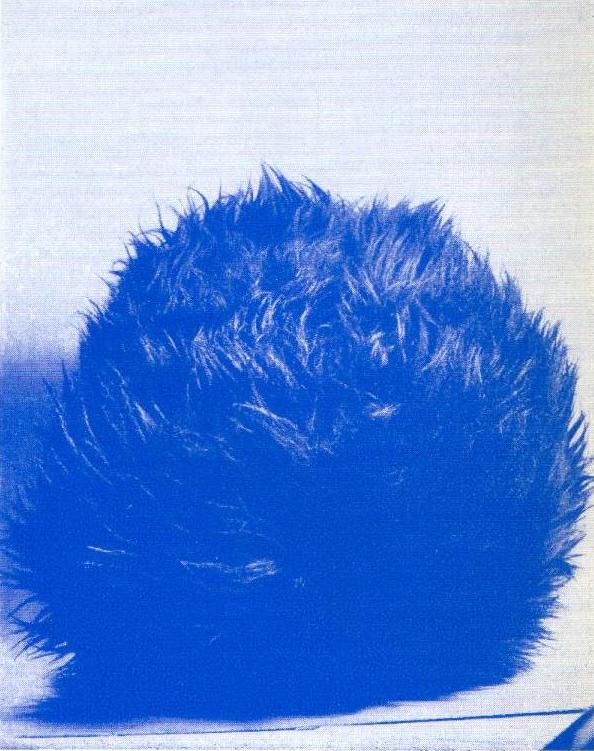.jpg)

Plexiglass, electrical equipment, motor, microphone, synthetic fur bag; sphere, 11" diameter.
Toy-Pet Plexi-Ball
Robin Parkinson (artist) and Eric Martin (engineer) 1968
"The Machine as Seen at the End of the Mechanical Age", a major exhibition at the Museum of Modern art, New York, (1968) helped make "technology" respectable in art once again. In the style of the great international expositions of the past, the exhibition attempted to project current trends into the future. While celebrating machines and machine lore in visual culture, the exhibit also pointed beyond the mechanical era to an age of electronics. One of the premises of the show was that "We are surrounded by the outward manifestations of the culmination of the mechanical age. Yet, at the same time, the mechanical machine – which can most easily be defined as an imitation of our muscles – is losing its dominating position among the tools of mankind; while electronic and chemical devices –which imitate the processes of the brain and the nervous system – are becoming increasingly important". (The Machine, page 3).
A special section "Experiments in Art and Technology" was devoted to artworks that were created jointly by artists and engineers. Some of the liveliest images in the exhibition invited "interaction" with the viewers, thus combining whimsical uses of technology with basic principals of behaviorist psychology. Robin Parkinson (artist) and Eric Martin (engineer) designed a playful "Toy-Pet Plexi-Ball", a plastic sphere with sensors that responded to light and sound. The sphere would start to roll when it "heard"hands clapping, and when change direction if the person clapped a second time, and so forth. When a synthetic fur bag was slipped over the sphere it became dormant, and could be petted like an ordinary cat or dog. Another interactive piece, "Proxima Centauri" by Lillian Schwartz (artist) and Per Biorn (engineer) featured a translucent dome on top of a rectangular base. The dome "lured" the spectator to a closer position by displaying changing visual patterns, but coyly dropped down into the base as a viewer approached, inviting even closer inspection.
One Reply to “1968 – Toy-Pet Plexi-Ball – Robin Parkinson and Eric Martin (American)”
Comments are closed.